Exploring Verizon 5G Ultra Wideband Technology


Intro
As we step into the world of hyperconnectivity, Verizon's 5G Ultra Wideband emerges as a titan in its field. This advanced mobile communication technology is more than just a buzzword; it marks the beginning of a new era in digital connectivity. From providing lightning-fast speeds to expansive network capacity, its promise is accompanied by a nuanced architectural framework designed to support the increasing demand for high-quality internet experiences across various sectors.
In this article, we will sift through the intricate layers of Verizon’s 5G Ultra Wideband technology. We will not merely graze the surface, but dive into how it works, the challenges it faces, and the tremendous potential it brings to industries ranging from healthcare to entertainment.
Understanding Storage, Security, or Networking Concepts
Preamble to the Basics of Networking
Networking is the backbone of modern communication, allowing devices to connect and interact seamlessly. At its core, it includes a web of interconnected systems that share data and resources, acting like the circulatory system of our digital world. Verizon's 5G Ultra Wideband embodies a leap forward in this realm, boasting ultra-low latency and super-fast data rates, which make it a game changer for users and companies alike.
Key Terminology and Definitions in the Field
Understanding the jargon can be a challenge, but it's crucial for grasping the full picture. Here are a few key terms:
- Bandwidth: The maximum rate of data transfer across a network.
- Latency: The time it takes for data to travel from source to destination.
- MHz (Megahertz): A measurement of radio frequencies used in wireless communications.
- Femtocell: A small cell that enhances signal strength in a localized area.
By familiarizing ourselves with these terms, we set the stage for deeper explorations into innovative technologies and their real-world applications.
Overview of Important Concepts and Technologies
Diving deeper, let's examine some of the critical technologies underpinning the 5G Ultra Wideband. This includes:
- Massive MIMO (Multiple Input Multiple Output): A system that significantly increases capacity and coverage by using multiple antennas at both the transmitter and receiver ends.
- mmWave (Millimeter Wave): Operating at higher frequency bands (24 GHz and above), mmWave enables faster data transmission, although its reach may be limited compared to lower frequencies.
- Edge Computing: A method that brings computation and data storage closer to the data source, reducing latency and improving performance.
These concepts interact harmoniously, shaping the future of networking and connectivity.
“5G Ultra Wideband is not just a faster version of its predecessors; it’s a revolution that is set to change everything.”
In the next sections, we will delve into the benefits and challenges associated with the deployment of this technology, as well as the transformative potential it harbors for various industries.
Preamble to Verizon 5G Ultra Wideband
Entering the realm of mobile technology, Verizon's 5G Ultra Wideband stands tall as a beacon of innovation. Its significance cannot be understated in today’s fast-paced digital world, where speed and reliability have become non-negotiable. This section aims to unpack what makes Verizon’s 5G Ultra Wideband a pivotal element in the telecommunications landscape.
One key aspect to consider is how 5G technology reshapes connectivity. It offers remarkable enhancements in speed and capacity, dwarfing previous generations of wireless technology. The importance of this leap cannot be overlooked. For businesses and individuals alike, the prospect of downloading large files in seconds or streaming high-definition content without a hitch is game-changing. It opens doors to new possibilities that were once considered the stuff of science fiction.
Moreover, Verizon's implementation of 5G Ultra Wideband represents more than just a technical shift. It's a fundamental change that may redefine entire industries, from healthcare to entertainment. Its potential for enabling faster data transfer directly impacts sectors relying on real-time analytics and instant communications.
Defining 5G Technology
5G is not merely an incremental upgrade from 4G, but a comprehensive overhaul of how mobile data is transmitted. With speeds that can exceed 10 Gbps, 5G supports an array of applications, from augmented reality experiences to IoT devices that can interact seamlessly and reliably. This technology uses a variety of frequency bands to achieve lower latency, making it ideal for applications where every millisecond counts.
To pinpoint what sets 5G apart, three major components define its framework:
- Enhanced Mobile Broadband (eMBB): This focuses on higher data rates, enabling better user experiences for activities like HD streaming.
- Ultra-Reliable Low-Latency Communications (URLLC): This is particularly beneficial for critical applications in sectors like healthcare and industrial automation.
- Massive Machine-Type Communications (mMTC): This connects a vast number of devices, fueling the growth of smart cities and IoT.
Verizon's Position in the 5G Landscape
In the competitive field of telecommunications, Verizon has carved out a substantial niche for itself with its 5G Ultra Wideband. Launching nationwide and prioritizing urban and densely populated areas has given Verizon a critical edge. As 5G adoption continues to rise, they’ve positioned themselves as a frontrunner in the 5G race.
Verizon's extensive investment in infrastructure supports its objectives, ensuring that its network remains viable and ahead of the curve. The company's early commitment brought significant attention, illustrating not only their technological prowess but also their understanding of market needs.
"Verizon’s investment in 5G is not just about technology; it's about enhancing the experience for all users and professionals in the digital ecosystem.”
Overall, Verizon's strategic insights and robust framework not only bolster its image but also reinforce its pivotal role in shaping 5G technology and its many applications across various industries.
The Architecture of Verizon 5G Ultra Wideband
Understanding the architecture of Verizon 5G Ultra Wideband is pivotal to grasping how this technology reshapes our connectivity landscape. The architecture comprises multiple integrated components that work together to deliver exceptional performance in terms of speed, capacity, and reliability. It encapsulates the underpinnings that allow Verizon to not just keep pace with the demands of modern users but to leap ahead with innovations that make our digital experiences seamless.
Network Components
Base Stations
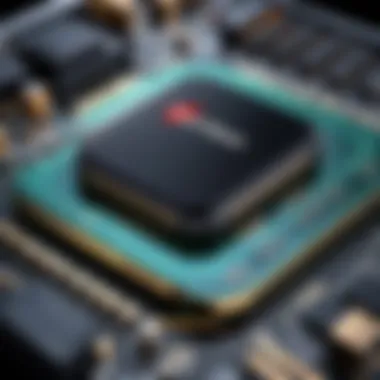
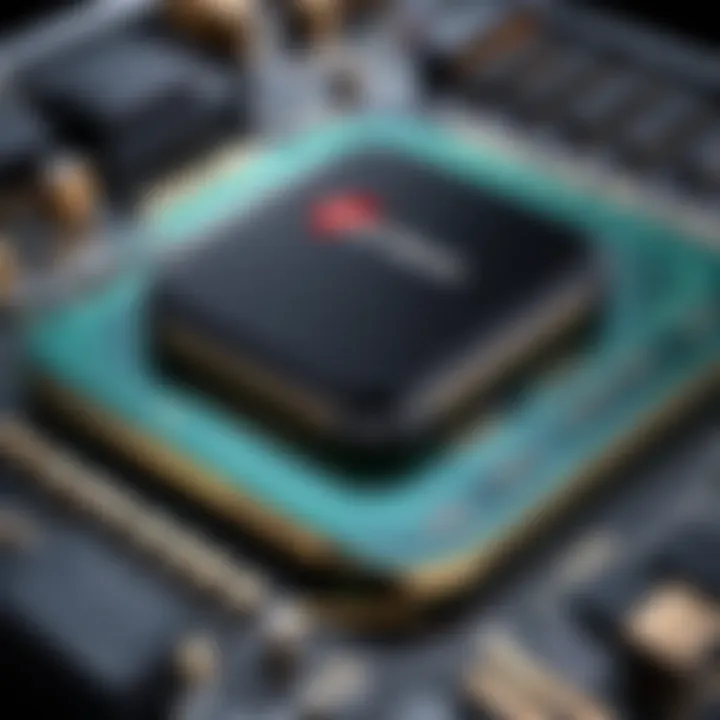
The base stations act as the backbone of Verizon's 5G Ultra Wideband network. They transmit and receive data signals, facilitating mobile connectivity. One key characteristic of these stations is their ability to handle numerous connections simultaneously without compromising performance. This high capacity makes base stations indispensable in dense urban areas where network demands are highest.
A unique feature of base stations is their implementation of Massive MIMO (Multiple Input Multiple Output) technology. This allows them to utilize multiple antennas to serve multiple users at once, increasing both capacity and coverage. However, the cost of implementing these advanced technologies can be significant, presenting a challenge in resource allocation for continued infrastructure growth.
Core Network
The core network is what holds it all together. It handles data traffic and ensures data packets are routed efficiently. A prominent feature of this network is its virtualization capabilities, which allow it to adapt resources in real-time based on demand. This flexibility is essential when you consider the variable nature of mobile data traffic.
The benefit of having a strong core network is illustrated by the network's resilience; when faced with unprecedented demand—like during a large public event—the core can reorganize itself to prioritize critical services and maintain connectivity. Conversely, one downside is that as the network becomes more complex, issues such as latency may arise if not managed properly.
Edge Computing
Edge computing completes the triad of essential components in Verizon's 5G architecture. It reduces the distance data must travel by processing information closer to the user, thereby minimizing latency. One key advantage of edge computing is that it enables real-time applications, which can be crucial for sectors such as autonomous driving or telemedicine.
A distinctive feature of edge computing is its ability to enhance the performance of applications requiring rapid data processing. Potential disadvantages may include the challenge of setting up numerous edge nodes, which requires significant investment and could complicate network management.
Spectrum Utilization
Low Band Spectrum
Low band spectrum, particularly prevalent in Verizon's infrastructure, provides broader coverage. This spectrum excels in penetrating buildings and lengthy distances. It plays a fundamental role in establishing 5G in areas where high-frequency bands struggle. Having widespread 5G access makes it a common choice for service providers looking to ensure connectivity in rural or suburban environments.
However, while low band spectrum excels in coverage, it typically falls short in speed compared to its higher frequency counterparts. Users might find decent connectivity, but not the lightning-fast speeds they would've hoped for.
Mid Band Spectrum
Mid band spectrum strikes a balance between coverage and speed. Characterized by its ability to provide faster data rates than low band while still covering decent distances, it is often referred to as the sweet spot for 5G deployment. This spectrum allows Verizon to cater to a wide array of user demands and ensures robust service in urban as well as suburban areas.
The unique aspect of mid band spectrum is its versatility. It successfully supports diverse applications and is particularly beneficial for mid-sized cities that need a dependable network for various services. Yet, the downside is that mid band signals can struggle to penetrate obstacles effectively, which sometimes requires additional infrastructure investment.
High Band (mmWave) Spectrum
High band spectrum, particularly mmWave, is where the lightning-fast speed of Verizon's 5G really shines. With incredible data rates and an ability to support numerous devices, it perfectly caters to environments with dense user demand, such as stadiums or urban centers.
This spectrum’s standout characteristic is its sheer speed; users can download large files within seconds. However, a significant drawback is its limited range—high band signals have difficulty penetrating walls and mitigating interference. This limitation forces reliance on a denser network of base stations to deliver performance, which can raise operational complexities and costs.
"In essence, Verizon's architecture for its 5G Ultra Wideband technology illustrates a robust and multifaceted approach to delivering unprecedented internet speeds and connectivity. It reveals a detailed strategy balancing coverage and speed across various spectrums to meet user demands."
Key Benefits of Verizon 5G Ultra Wideband
Understanding the key benefits of Verizon's 5G Ultra Wideband technology is crucial as it offers transformative potential across various sectors. This next-generation mobile communication technology doesn't just enhance speed; it reshapes how individuals and businesses interact with the digital world. Let’s break down some of the standout features that make this technology a game-changer.
Enhanced Speed and Capacity
One of the most noticeable advantages of Verizon's 5G Ultra Wideband is its remarkable speed. Imagine downloading a full-length movie in mere seconds rather than waiting for hours; this is the kind of speed that 5G promises. The theoretical maximum speed of Verizon's 5G can reach up to 20 Gbps, but users might experience real-world speeds that are still significantly higher than current 4G LTE connections.
- Higher Bandwidth: 5G can support more devices simultaneously without sacrificing performance. This is essential in today's digital age, where multiple devices are connected at any given time.
- Improved Streaming Quality: Whether you're streaming a high-definition video or engaging in online gaming, the enhanced capacity allows for smoother experiences with minimal buffering.
With more speed at your fingertips, applications that were once resource-intensive can function seamlessly. The surge in capacity that 5G brings also fosters the growth of innovations like virtual reality (VR) and augmented reality (AR) which rely heavily on fast data transmission.
Lower Latency
Latency refers to the time it takes for data to travel from the sender to the receiver. Lower latency means quicker response times, which is critical for many applications, especially in areas like gaming, telemedicine, and autonomous driving. 5G networks can achieve latency as low as 1 millisecond, compared to the 30-50 milliseconds typical of 4G.
- Real-Time Communication: For sectors such as healthcare, where remote surgeries might become a norm, low latency is a lifesaver—literally. It allows real-time communication between doctors and patients, ensuring precision.
- Enhanced Gaming Experience: Gamers benefit from reduced lag during online multiplayer sessions. This enhances competitive play and makes the overall experience more enjoyable.
The importance of low latency cannot be overstated in applications where timing is everything, which is increasingly relevant as industries push towards automation.
Improved Connectivity in Dense Environments
Urban landscapes present a unique set of challenges for wireless connectivity, with numerous devices clamoring for bandwidth in close proximity. Verizon's 5G Ultra Wideband technology addresses these challenges head-on, providing improved connectivity in densely populated areas.
- Urban Infrastructure Support: Cities can leverage 5G for smart city initiatives, connecting everything from traffic lights to public transportation in more efficient ways.
- Event Venues: Think of how sporting events or concerts struggle with connectivity. 5G's ability to handle multiple devices helps ensure that everyone can stream, post, or share their experience without hitches.
This type of enhanced connectivity is vital in today's hyper-connected world. It ensures that whether one is in a packed stadium or a busy coffee shop, uninterrupted access to digital services is a reality.
"5G technology is not just an upgrade; it's a complete rethinking of how we connect, interact, and innovate in an increasingly interconnected world"
—Tech Industry Analyst
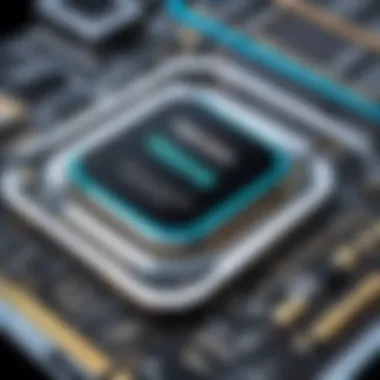
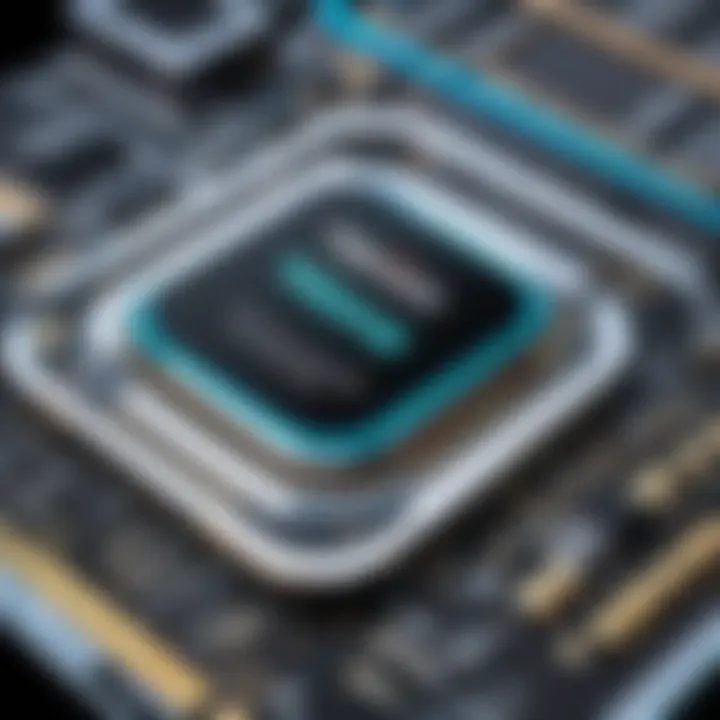
In summary, the benefits of Verizon's 5G Ultra Wideband technology are profound and far-reaching. From enhancing user experiences through speed to fostering innovations that rely on quick data transfer, the potentials are enormous. As companies and individuals adapt to these changes, we may very well be standing on the precipice of a significant technological leap.
Challenges Facing Verizon 5G Ultra Wideband
In the fast-paced world of telecommunications, emerging technologies like Verizon's 5G Ultra Wideband promise transformative connectivity. However, as with any innovative venture, there are notable challenges that need to be assed for it to reach its full potential. These challenges can significantly influence deployment strategies and determine the overall success of Verizon's 5G initiatives.
Infrastructure Costs
One of the most significant hurdles in the rollout of Verizon’s 5G Ultra Wideband is the high cost associated with infrastructure development. Building a robust 5G network necessitates substantial investments in equipment and installations. Creating new base stations and upgrading existing ones represents just the tip of the iceberg.
To give you an idea,
- Fiber optics tech has become crucial. Verizon must expand its fiber networks to support high-capacity data needs. In essence, each base station needs to be connected to a reliable, high-speed network backhaul, which is no small feat.
- Small cells play an essential role in 5G deployment. These tiny stations are essential to boost coverage and capacity, particularly in dense urban environments. However, they can be costly to install and maintain.
The overall capital expenditure can be quite staggering, leading to concerns about return on investment. Tapping into government and municipal partnerships could mitigate some costs, but this slows down the project duration, adding another layer of complexity.
Coverage Limitations
While Verizon’s 5G Ultra Wideband promises rapid speeds and enhanced connectivity, the nature of the technology itself presents coverage challenges. The range of high-band (mmWave) frequencies, while able to deliver outstanding performance, tends to have poor penetration through obstacles such as buildings and trees. This limitation means that coverage is often spotty, especially in suburban or rural areas.
- Urban Focus: In densely populated cities, the deployment can be more effective. However, the sheer concentration of users can lead to bottlenecks, diminishing the promised advantages during peak times.
- Rural Residences: For individuals living outside the city limits, the reliable service that 5G promises might remain nothing more than a pipe dream for some time. This disparity may widen the digital divide, leaving less urbanized areas in a tough spot, lagging behind in access to next-gen connectivity.
Collaboration with local governments and other entities may help ease these limitations, but effective strategies need to be devised quickly—time is of the essence in telecommunications.
Device Compatibility and Adoption
Another significant challenge facing the rollout of Verizon 5G Ultra Wideband is the need for compatible devices. Not all smartphones or other devices can utilize 5G technology, leading to concerns regarding adoption rates. Users might be hesitant to upgrade if the enhanced features of 5G can’t be fully utilized.
- Consumer Cost: The price tag of a cutting-edge device could be a dealbreaker for potential users, particularly in economically challenging times.
- Awareness and Education: Many consumers are still not well-informed about the advantages of 5G. The marketing initiatives undertaken by Verizon must overcome skepticism and communicate the concrete benefits.
"The transformation to 5G goes beyond mere speed; it's about unlocking new capabilities and experiences that have yet to be fully realized."
If these issues are not addressed promptly, Verizon could find itself trailing behind its competitors in the race towards broad consumer acceptance of this groundbreaking technology.
Comparative Analysis with Other 5G Providers
As the 5G landscape continues to expand and evolve, comparing Verizon's Ultra Wideband capabilities with those of other key players in the industry becomes increasingly pivotal. This segment not only sheds light on the distinct strategies employed by competitors, such as AT&T and T-Mobile, but also highlights the implications of these strategies for users, developers, and stakeholders. By examining how Verizon stacks up against its rivals, professionals can gain nuanced insights into market positioning and future trends.
AT&T and T-Mobile Strategies
AT&T and T-Mobile have both rolled out their own 5G initiatives, aiming to carve out their niches in the broadband market. Understanding their respective approaches is crucial for grasping the overall competitive landscape.
- AT&T has opted for a mixed-spectrum strategy that encompasses both low-band and mid-band spectrums. This enables more extensive coverage while still providing competitive speeds. Their branding often emphasizes a blend of availability and performance.
- T-Mobile, on the other hand, has aggressively pushed its low-band 5G as a foundational service, claiming to cover a larger geographic area compared to others. They have heavily invested in their mid-band spectrum, which allows for faster speeds in urban settings.
- Distinctive Selling Points:
- AT&T focuses on reliability and extensive service coverage, targeting user convenience.
- T-Mobile’s strategy leans towards aggressive marketing and affordability, attracting budget-conscious consumers.
Both brands employ unique marketing tactics that resonate with their respective customer bases, shaping the narratives around 5G connectivity and user experience. While AT&T aims for robustness in service delivery, T-Mobile positions itself as the more accessible option.
International Comparisons
Looking beyond the borders of the U.S. provides additional context for understanding Verizon's standing in the 5G domain. Other countries are pushing the envelope as well. For instance:
- In South Korea, companies like SK Telecom have achieved remarkable 5G rollouts, exhibiting ultra-fast speeds even in densely populated areas. Their approach emphasizes innovative applications of 5G tech in domains such as IoT and autonomous vehicles.
- China's emphasis on building a robust telecommunications framework has resulted in one of the world's largest 5G markets. The China Mobile, China Unicom, and China Telecom consortium have aggressively collaborated to leverage their 5G offerings, often outpacing Western rivals in both coverage and adoption rates.
- In Europe, Vodafone is focusing on a multi-band strategy, much like AT&T, but with a particular emphasis on enhancing rural connectivity through innovative tech solutions.
Through these comparisons, it becomes clear that while Verizon's Ultra Wideband has made substantial strides, it operates within a diverse global ecosystem of providers that prioritize different aspects of 5G technology. Each approach provides lessons that could inform future developments.
"The competitive landscape of 5G is not merely a race for speed; it's about how effectively a provider can meld technology and user experience into a reliable service."
This comparative backdrop showcases that the battle in the 5G arena isn't solely about who offers the fastest download speeds—it’s also about coverage, reliability, and strategic partnerships. As industries continue to pursue advanced connectivity solutions, understanding these competitive strategies becomes fundamental.
Real-World Applications of Verizon 5G Ultra Wideband
The advent of 5G technology is reshaping many sectors, and Verizon's 5G Ultra Wideband is at the forefront of this transformation. This section explores key real-world applications of this technology, illustrating how it enhances efficiency, connectivity, and innovation across different domains. With capabilities far superior to its predecessors, 5G Ultra Wideband is more than just a faster internet; it is a tool enabling businesses and cities to integrate smarter solutions into their frameworks.
Smart Cities Initiatives
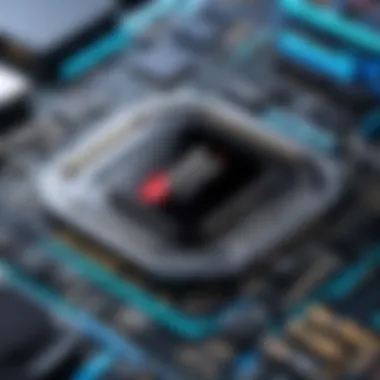
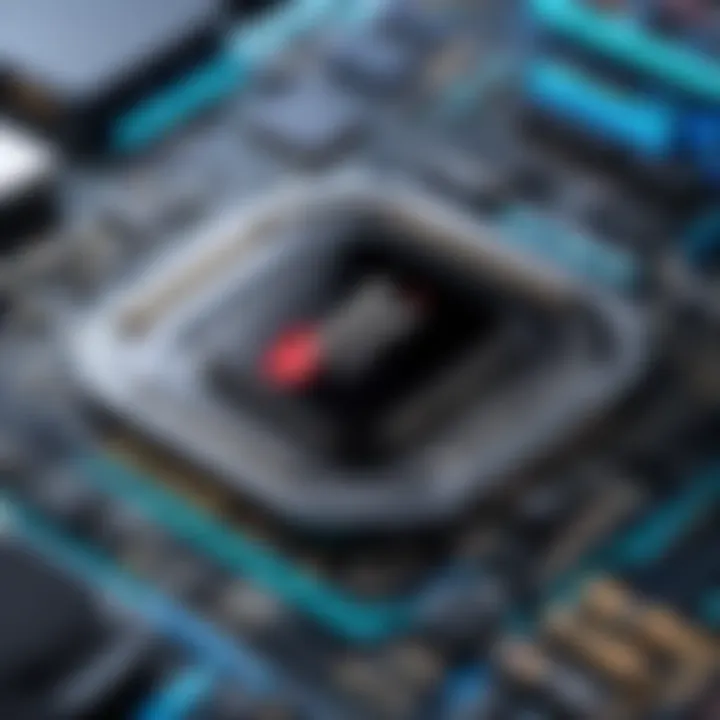
In the realm of smart cities, Verizon's 5G Ultra Wideband provides the groundwork for interconnected urban infrastructures. By harnessing real-time data from sensors, cities can manage traffic flow, control streetlights, and monitor waste management systems more efficiently. The increasing number of IoT (Internet of Things) devices expected in urban areas requires robust connectivity, which 5G offers unmistakably.
For instance, the integration of advanced traffic management systems can be achieved through 5G networks. These systems analyze data from vehicles and public transportation to optimize routes, thus reducing congestion and improving air quality. In addition, public safety can be enhanced with faster communication between emergency services, improving response times in critical situations.
Some specific initiatives under development include:
- Smart traffic signals that adapt to real-time traffic conditions.
- Connected waste bins that notify disposal services when they are full.
- Environmental sensors that monitor pollution levels.
Healthcare Innovations
Healthcare stands to gain tremendously from the implementation of Verizon’s 5G Ultra Wideband. The technology enables doctors and healthcare providers to access essential patient data swiftly, improving diagnosis and treatment plans. Real-time remote consultations through high-definition video can significantly reduce the need for hospital visits, making healthcare both accessible and efficient.
Moreover, advanced surgical techniques are already benefiting from 5G's capabilities. Surgeons can perform operations using robotic tools, controlled remotely, ensuring precision that was previously unattainable. In emergency services, ambulances equipped with 5G technology can transmit live patient data to hospitals while en route, preparing medical teams even before the patient arrives.
Some practical applications include:
- Remote patient monitoring that allows continuous health status checks.
- Telemedicine services enabling virtual consultations with specialists worldwide.
- 3D imaging that can be shared instantly between professionals during critical surgeries.
Entertainment and Media Enhancements
The entertainment industry is also undergoing a seismic shift thanks to Verizon's 5G Ultra Wideband. Faster download speeds and lower latency pave the way for immersive experiences, such as augmented reality (AR) and virtual reality (VR) applications in gaming, sports, and live events.
Through 5G, streaming services can deliver ultra-high-definition (UHD) content without buffering, significantly enhancing viewer satisfaction. This technology also allows for multi-camera views in sports broadcasts, letting users choose their perspective, which offers a personalized experience like never before.
Key developments making waves in the entertainment scene include:
- Interactive gaming that connects players in real-time across the globe.
- Augmented reality features in apps that enhance real-life experiences.
- Live VR events that allow audiences to feel present at concerts or sports events, no matter their physical location.
"The deployment of Verizon’s 5G Ultra Wideband is not just about speed; it’s about revolutionizing how industries function and innovating the everyday lives of people."
In summary, Verizon’s 5G Ultra Wideband has far-reaching implications for smart cities, healthcare, and entertainment, paving the way for quicker processes, innovative solutions, and enhanced user experiences. As this technology continues to evolve, its applications will undoubtedly expand even further, touching facets of daily life that we have yet to imagine.
Future Prospects of Verizon 5G Ultra Wideband
As we delve into the future of Verizon's 5G Ultra Wideband, it's essential to ponder its implications on technology and connectivity. The knack for better, faster, and more reliable internet has always been at the forefront of consumer and business needs. Not only does this technology promise to enhance how we connect, but it may also redefine multiple sectors, from healthcare to entertainment, and even manufacturing.
Technology Advancements
The upcoming phases of Verizon's 5G Ultra Wideband are expected to be remarkable, showcasing technological advancements that can reshape the very fabric of information exchange. Emerging tech such as virtual reality (VR) and augmented reality (AR) stands to gain from the reduced latency and increased bandwidth offered by 5G. Imagine immersive experiences that don't falter due to buffering or lagging, something that could take gaming and training simulations to whole new heights.
In addition to real-time experiences, there’s also talk of integrating this connectivity with Internet of Things (IoT) devices. Smart cities are in the mind's eye of many; with a robust 5G network, everything from traffic lights to public transport can become interconnected, resulting in smoother operations and enhanced urban living.
"The future holds significant promise for Verizon's 5G Ultra Wideband, not just in speed, but also in how it changes our daily interactions with the world."
Another significant advancement is likely to be found in AI functionalities. Enhanced networks may lead to smarter artificial intelligence applications, enabling enterprises to analyze large data sets swiftly. This can lead to improved decision-making processes, giving organizations a competitive edge.
Market Trends and Predictions
As we look ahead, the market trends suggest that Verizon's 5G Ultra Wideband will not only thrive but expand its footprint. Industry forecasts indicate that demand for higher speeds and reliable connectivity will continue skyrocketing. The need for such networks is crucial, especially as remote work remains predominant. It's estimated that by 2025, mobile data traffic will increase exponentially, making it imperative for Verizon to keep pace with this growth.
Moreover, the competitive landscape among telecom providers is heating up. Verizon is poised to leverage its advantageous position, but it must be agile and responsive to keep up with rivals like AT&T and T-Mobile. Customer expectations are shifting; they desire seamless experiences, and any provider that can deliver will likely dominate the market.
In summary, the future of Verizon's 5G Ultra Wideband is painted with remarkable potential as it prepares for groundbreaking advancements and evolving market dynamics. The interplay between technology and user demands will surely shape the next phase of mobile connectivity, making it a thrilling landscape to watch for IT professionals, cybersecurity experts, and students alike.
Epilogue
The importance of the conclusion in this article cannot be overstated. It serves as a digital bow on top of the comprehensive gift of information about Verizon's 5G Ultra Wideband, tying together key insights and underscoring the overarching themes presented throughout the discussion.
Summary of Key Insights
In navigating through the intricacies of Verizon's 5G Ultra Wideband technology, several significant points have emerged. Firstly, the architecture of the network reveals a complex interplay of infrastructure, including the pivotal role of base stations and a multifaceted core network. The innovative use of various spectrum bands—ranging from low to mid-band and high-band (mmWave)—is groundbreaking, allowing for enhanced connectivity and capacity.
Additionally, the real-world applications of this technology underscore its transformative potential. From fueling the concept of smart cities to revolutionizing healthcare and enriching media experiences, the implications are vast. However, it's essential to recognize the challenges, such as hefty infrastructure costs and limited coverage in certain areas.
"In a world that demands instant connectivity, Verizon's 5G Ultra Wideband may very well be the technology that bridges the gap between what we have and what is possible."
The Way Forward
Looking ahead, the trajectory for Verizon's 5G Ultra Wideband seems promising, albeit with obstacles to navigate. As technology rapidly evolves, ongoing advancements in network capabilities will likely continue to enhance user experiences. It's imperative for Verizon to remain agile, adapting to shifting market trends while pushing boundaries in innovation.
The path forward also hinges on addressing the challenges head-on. This includes improving device compatibility and fostering widespread adoption. As more industries recognize the benefits of low latency and improved connectivity, the demand for 5G technology is set to rise. The role of Verizon will be crucial, as they not only shape their own future but also impact global connectivity.
In summary, Verizon's 5G Ultra Wideband is not just a leap in technology; it's a game changer in how we think about connectivity, paving the way for future innovations and societal shifts. The next chapter in mobile technology appears bright, fueled by the potential of 5G.



